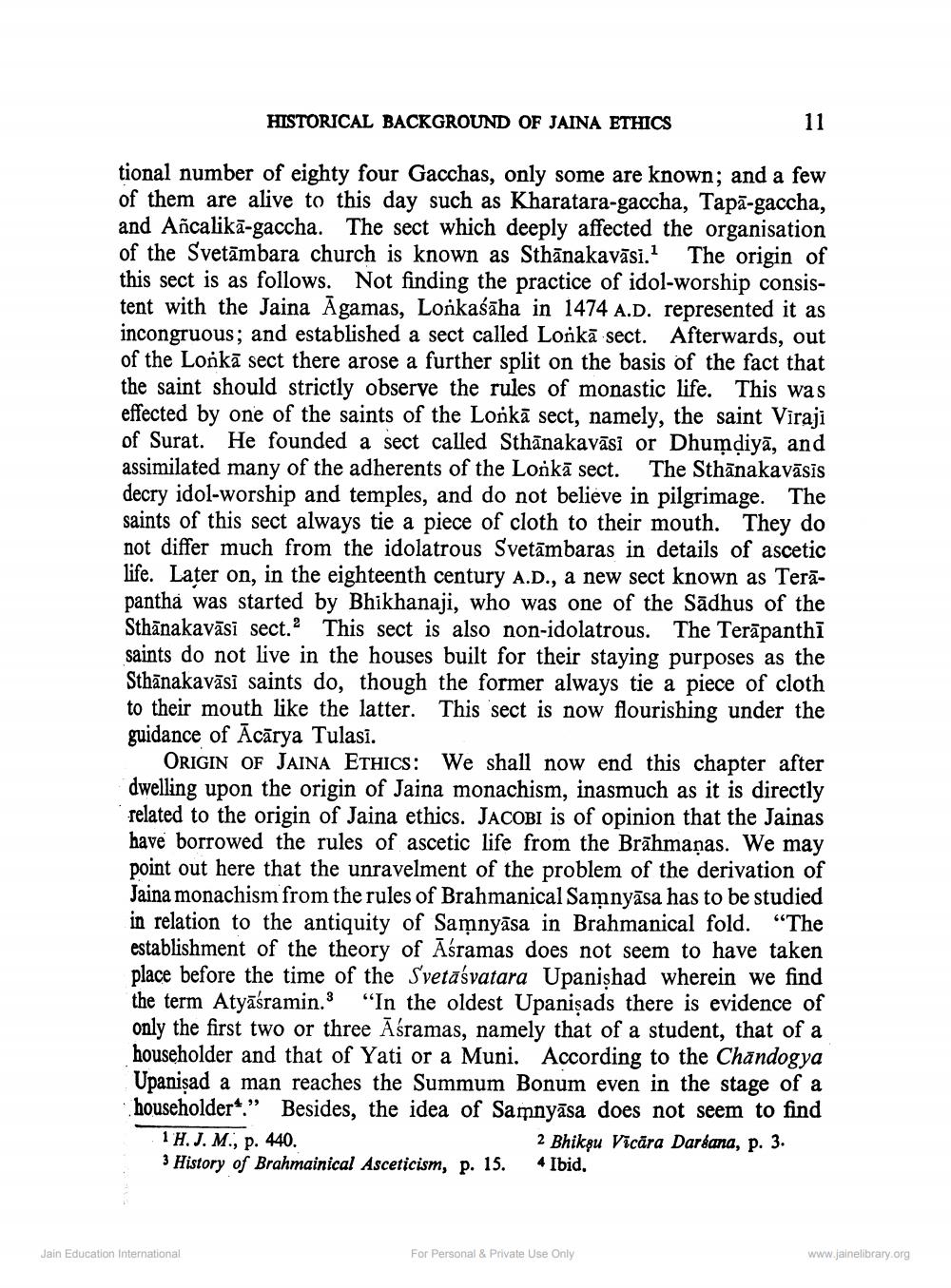________________
HISTORICAL BACKGROUND OF JAINA ETHICS
tional number of eighty four Gacchas, only some are known; and a few of them are alive to this day such as Kharatara-gaccha, Tapa-gaccha, and Añcalika-gaccha. The sect which deeply affected the organisation of the Svetambara church is known as Sthanakavāsi.1 The origin of this sect is as follows. Not finding the practice of idol-worship consistent with the Jaina Agamas, Lonkaśaha in 1474 A.D. represented it as incongruous; and established a sect called Lonka sect. Afterwards, out of the Lonka sect there arose a further split on the basis of the fact that the saint should strictly observe the rules of monastic life. This was effected by one of the saints of the Lonka sect, namely, the saint Viraji of Surat. He founded a sect called Sthanakavasi or Dhumḍiya, and assimilated many of the adherents of the Lonka sect. The Sthanakavāsīs decry idol-worship and temples, and do not believe in pilgrimage. The saints of this sect always tie a piece of cloth to their mouth. They do not differ much from the idolatrous Svetambaras in details of ascetic life. Later on, in the eighteenth century A.D., a new sect known as Terapantha was started by Bhikhanaji, who was one of the Sadhus of the Sthanakavāsi sect.2 This sect is also non-idolatrous. The Terapanthi saints do not live in the houses built for their staying purposes as the Sthanakavāsī saints do, though the former always tie a piece of cloth to their mouth like the latter. This sect is now flourishing under the guidance of Acarya Tulasi.
ORIGIN OF JAINA ETHICS: We shall now end this chapter after dwelling upon the origin of Jaina monachism, inasmuch as it is directly related to the origin of Jaina ethics. JACOBI is of opinion that the Jainas have borrowed the rules of ascetic life from the Brahmaṇas. We may point out here that the unravelment of the problem of the derivation of Jaina monachism from the rules of Brahmanical Samnyasa has to be studied in relation to the antiquity of Samnyasa in Brahmanical fold. "The establishment of the theory of Asramas does not seem to have taken place before the time of the Svetasvatara Upanishad wherein we find the term Atyaśramin.3 "In the oldest Upanisads there is evidence of only the first two or three Asramas, namely that of a student, that of a householder and that of Yati or a Muni. According to the Chandogya Upanisad a man reaches the Summum Bonum even in the stage of a householder." Besides, the idea of Samnyasa does not seem to find
1 H. J. M., p. 440.
3 History of Brahmainical Asceticism, p. 15.
Jain Education International
11
2 Bhiksu Vicāra Darsana, p. 3. 4 Ibid.
For Personal & Private Use Only
www.jainelibrary.org




